Discover the Legacy of Chesapeake, Ohio
The Origins and Evolution of Rockwood, Ohio
| J. E. Wood thought it would be great to call the community Woodsville. But since there was already a Post Office with that name in Ohio, everyone decided to go with Rockwood instead, a name that describes the area’s rugged hills and lush woods. |
The location of Rockwood, Ohio, had numerous resources very few towns could claim. Not only did the entire bottom half of it have easy access to the Ohio River, but there was anticipation of the new railroad bridge connecting the area to the newly formed town of Huntington, WV.
Despite C. P. Huntington’s vision and local enthusiasm, the bridge intended to link the Chesapeake & Ohio Railroad from Richmond, VA, to the Great Lakes via Ohio was never realized. The question remains: why was the railroad not constructed across the Ohio River at Symmes Creek’s mouth, between Rockwood, Kounston, and Huntington, WV? This chapter of Rockwood’s history will reveal the answer to that question.
Rockwood, Ohio, previously known as Frampton Farm, underwent a significant transformation after Martin Frampton died. His son, James R. Frampton, began selling off land parcels to families and caught the eye of some big-time investors who saw the area’s potential. One notable investor was Dr. Benjamin Cory, a well-respected doctor from Ironton, Ohio, who quickly teamed up with the area’s top landowners to co-found the Rockwood Mining Company.
The company commissioned Thomas Gore to survey the land, and he documented a plat map in the Lawrence County, Ohio, Recorder’s Office in Ironton, Ohio, on 7 October 1874. The property attracted investors due to the high-quality stone quarry and the picturesque woods.
The Frampton's Sells to Rockwood Mining Company
The following day, on 8 October 1873, Wm. G. Frampton, Executor and son of the late Martin Frampton, sold 445 acres of land for $10,000 in Sections 29 & 33 to the Rockwood Mining Company, as recorded in Deed Book 31, page 315.
The property adjoined C. B. Egerton’s land to the east, J. Adam’s land to the southeast, the Whitehead property further southeast, and extended to the Ohio River.
Meanwhile, on 16 October 1873, the Huntington Advertiser announced that James Frampton, brother of William G. Frampton, had commenced construction of a large storeroom in Huntington, WV. He intended to relocate his merchandise from his current location at the mouth of Symmes Creek.
Subsequently, the newspaper thought James R. Frampton should have settled into his new establishment by 20 November 1873. The Huntington Advertiser reported that the artist working on Frampton’s latest store’s interior design and decoration was ill. This raised questions about whether the illness was a cover-up for the financial impact, which might have rendered the contractors working on Frampton’s store insolvent.
Almost a year later, on September 9, 1875, James R. Frampton moved back to Rockwood and purchased lots 13 and 14 from the company for $300, as noted in Deed Book 33, page 463.
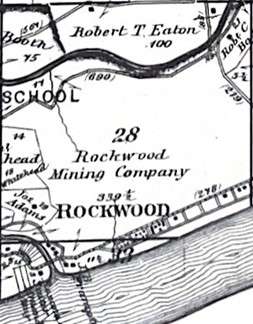
The Rockwood Mining Company completed its first transaction with Melinda Westbay on 22 April 1874 in the newly founded ‘town’ of Rockwood. She acquired lots 3, 4, 5, and 6 for $480, as recorded in the Lawrence County, Ohio Recorder’s Office in Deed Book 32, page 251.
Rockwood's Historical Significance
Rockwood's Natural Resources
Rockwood, Ohio, played a crucial role in Huntington, West Virginia’s development during the 1870s. The town’s strategic location along the Ohio River made it a vital hub for trade and transportation. In 1873, Rockwood’s economic activities, including the sale of lots and the discovery of valuable natural resources, significantly contributed to the growth and prosperity of Huntington. The area’s rich deposits of fire clay and coal attracted industries and settlers, fostering a thriving community that laid the foundation for Huntington’s future success.
Judge C. B. Egerton, one of the stockholders in Rockwood Mining Company and whose son served as the County Surveyor for this region, actively sought to identify additional resources and attractions that could enhance the area’s appeal to prospective residents and visitors while also promoting various initiatives aimed at boosting local tourism, which included the proposal for a major hotel. [Huntington Advertiser, 6 Nov 1873, page 3].
The up-and-coming community of Rockwood was rapidly progressing, having constructed two homes and sold nearly twenty lots in a brief period. On 14 June 1873, a considerable crowd braved the inclement weather to attend the lot sale in the developing area of Rockwood. Despite the muddy conditions and overall discomfort, they made purchases eagerly and at fair prices. Reports indicate that 11 lots were sold, averaging $134 each, measuring 30 by 120 feet. Investors in these properties had substantial grounds for optimism. [Huntington Advertiser, 19 June 1873, page 3].
Even though they were still in the early days of development, the entrepreneurs in Rockwood were brimming with excitement. [Huntington Advertiser, 19 June 1873, page 3, and 7 August 1873, page 3]. The discovery of high-quality iron ore specimens in Rockwood by J. E. Wood sparked excitement among other prospectors. They eagerly anticipated the soon-to-be operational blast furnaces and manufacturing fire bricks, which they believed would signal the city’s growth and economic boom.
The Huntington Advertiser confidently stated, “We have no doubt that with the right developments, we would uncover iron ores of superior quality in nearly all the surrounding hills and ridges.” [Huntington Advertiser, 19 Jun 1873, page 3].
The newspaper reporter got a little arrogant when his article in the Advertiser on 7 August 1873 boasted that Rockwood [‘the city over the river’] was ‘going to take the life out of Ironton.’ The only thing that held up development in Rockwood back in 1873 was sorting out the addresses for homes and getting the gas and water lines set up. [Huntington Advertiser, 16 October 1873, page 2].
When young businessmen Gorman and Allen arrived in Huntington, WV, in 1873, they opened a store at the corner of Second Avenue and Tenth Street. During this time, the Huntington Advertiser ran ads announcing that they had leased the ‘extensive rock quarry’ in Rockwood, Ohio. This shared history binds the two areas of southern Ohio and the new city of Huntington, WV, creating a sense of shared identity.
Another example was two well-known Union Township residents, Kouns and Gillen. In the Huntington Argus newspaper, they begin running ads to announce their new meat shop on Eight Street in Huntington on 19 Sept. 1973. On the same date as that newspaper, “Gorman & Allen” had just completed the first stone sidewalk in Huntington, WV, using the stone from Rockwood, Ohio. Undoubtedly, many of the homes built in Huntington still have stone made from Rockwood in their windowsills and hearthstones.
The Huntington Advertiser kept a close eye on the political happenings in Rockwood, Ohio, during the Presidential election in late 1873. The article mentions that a few groups were spotted entering the town just before the polls closed, raising concerns about possible trouble. Fortunately, the day unfolded without any incidents, and was a peaceful day.
In a follow-up article published on December 4, 1873, the Huntington Advertiser shared that the situation in the neighboring city stayed steady, with no signs of renewed riots after election day, bringing hope that the unrest had finally ended.
Rockwood's Recovery
Rockwood had great potential, but a storm brewing behind the scenes would slow the growth for several years. The Cooke Panic began with a crisis in Europe in the summer of 1873, which led to a global stock market crash. Investors rapidly sold their stakes in American ventures, especially in the expanding railroad industry. The trickle-down effect affected the booming town of Huntington, WV, and Rockwood, Ohio, head-on. The big investors, including C. P. Huntington, were counting on the railroad coming from the rich coal fields in West Virginia, crossing the Ohio River at Huntington, WV, and Rockwood, Ohio, near the mouth of Symmes Creek, and continuing up to Toledo, Cleveland, and Chicago.
Against the backdrop of that financial turmoil, Esq. Enslow, an investor in the Rockwood Mining Company, sold his shares in Rockwood, Ohio, to Mr. W. H. Remington of Pomeroy, Ohio. Enslow was heavily involved in Huntington’s financial investments, and knowing that it was thriving, he moved his investments to Huntington. [Huntington Advertiser, April 16, 1874].
Despite the global crisis, local newspaper ads continued to promote Rockwood’s ‘superior advantages’ to capitalists and investors. The sale of numerous lots facilitated the town’s steady growth. Lot sales expanded to the hilly regions above the Ohio River’s flatlands [Huntington Advertiser, June 1, 1874].
The Expansion of Rockwood
Even throughout the economic depression, the young ‘town’ of Rockwood continued to grow, and a suitable crossing of Symmes Creek was needed. In 1875, a single-lane steel bridge was built to replace the earlier bridge, likely made of wood, which had been in place since 1872.
That bridge was sufficient for nine years, but in 1884, it became evident that a more efficient bridge was necessary. However, the placement of the bridge wasn’t without controversy. The 18 December 1884 edition of The Huntington Argus reported a critical error by the Commissioners and Engineers, who placed the bridge directly over Symmes Creek, significantly damaging Isaac L. Suiter’s property.
However, following the completion of the Symmes Creek bridge in 1884, the sale of Rockwood’s lots continued. The modest community expanded with the businesses of the J.R. Frampton Post Office and grocery store, W.F. Boothe’s blacksmith and wagon shop, P.C. Brammer’s Symmes Creek flour mill, Fleming Booth’s broom factory, an additional blacksmith shop, two newspapers, Weiseman & Brother’s store, and four mills along Symmes Creek, all of which emerged as vital local industries. According to the same newspaper edition, P. Henson established a flagstone quarry on Richard Eaton’s farm. It raises the question of whether this could be the same quarry that Gorman & Allen in Huntington, WV, had leased in 1873.
At one time, Rockwood streets bore the names of the Rockwood Mining Company’s shareholders. Enslow, Gore, Noble, and Frampton Streets run west to east, while the former Ben Alley, now Ben Street, is located to the north. Ironically, Frampton Street was vacated following Chesapeake’s incorporation as a village.
Beyond the school property, additional streets were named from west to east: Newberger Street, Kouns Street, Egerton Street, Cory Street, and Mather Street, which were vacated when Mr. Gray purchased that property and renamed it Geo. N. Gray’s Addition. Further north of Gray’s Addition, R. M. Eaton subdivided his property into lots, forming the E. M. Eaton Addition, and he added Cliff Street there. The Plat of R. M. Eaton’s Addition to Rockwood was officially recorded at the Courthouse. [Plat Book 2, page 159, dated 3 August 1905]
The Egerton Land Company was founded on May 18, 1889, by Charles B. Egerton and his wife, Emeline T. Egerton. J. T. Egerton served as its President, and C. B. Egerton took on the role of Secretary. Their efforts facilitated the eastward expansion into regions such as Elmwood #1, Elmwood Avenue, Elmwood Terrace, and Riverview Terrace, which profoundly reshaped the landscape and identity of Rockwood during its developmental period.
In East Rockwood, Egerton included the names First Street, Center Street, Elm Street, Spring Street, Oak Street, Willow Street, Cedar Street, High Alley, and Rock Alley in his addition. [Plat Book 2, page 32, and 1926 map of Rockwood.] Even after creating the East Rockwood lots, The Egerton Land Company still owned 187.54 acres in Rockwood in 1926.
The maps below display the evolution of the Rockwood community from 1873 to 1926, showing its transformation throughout the years.
Important Historical Events
Hand Drawn Map of Post Office Route
The Mail Route From Rockwood, ca. 1880. Source: National Archives
Rockwood Early Settlers
Below are the names of the early settlers in Rockwood, according to the 1887 Hardesty Atlas.
Name
Booth, W. F.
Brammer, P. C.
Barnett, R. W.
Booth, S. W.
Booth, Isaac
Booth, O. S.
Egerton, E. G.
Eaton, R. M.
Eaton, R. T.
Foster, J. D.
Gue, S. D.
Henson, P.
Howell, Jas. K.
Kimball, Augustine
Kimball, Jasper
McCormick, E. B.
Roy, A. W.
Ransbottom, J. H.
Date Arrived
1856
1848
1854
1863
1829
1834
1852
1851
1826
1841
1865
1851
1845
1868
1837
1879
1862
1844
Nativity
Lawrence County, Ohio
Lawrence County, Ohio
Lawrence County, Ohio
Lawrence County, Ohio
Lawrence County, Ohio
Lawrence County, Ohio
Vermont
Lawrence County, Ohio
Lawrence County, Ohio
Lawrence County, Ohio
Cabell County, WV
Lawrence County, Ohio
Lawrence County, Ohio
Lawrence County, Ohio
Lawrence County, Ohio
Gallia County, Ohio
Greenup County, Kentucky
Madison County, VA
occupation
Blacksmith & Wagon Maker
Miller
Farmer
Clerk
Farmer
Farmer
Farmer
Farmer
Twp. Trustee & Farmer
Farmer
Farmer
Stone Mason
Editor
Student
Ex-Sheriff & Farmer
Farmer
Justice of the Peace & Farmer
Farmer
Newspaper Clippings About Rockwood
While Rockwood was already home to a newspaper, a second, yet-to-be-named newspaper emerged in late 1883. Unfortunately, copies of those newspapers have never been found. The following is a collection of newspaper articles from different sources around the country detailing events and residents of Rockwood, Ohio, listed in chronological order.
- River Pirates – For some time, it has been apparent that there was an organized system of stealing along the grade. On Wednesday of this week, Superintendent Van Cleve had his attention called to ten or twelve kegs of railroad spikes lying on the beach above town. An investigation proved them to be the property of the Railroad Company. The owner of a skiff moored nearby was arrested; they proved to be one J. L. Shriver, who had been arrested some two weeks since being charged with stealing a skiff and other property but was then released by providing an alibi. An examination of several witnesses made it plain that he had stolen the spikes, buried them in the sand above town, dug them up Tuesday night, and brought them below town. On the Ohio side, his flatboat in charge of an accomplice left the same night. The Marshal is in pursuit of the boat. Shriver was committed to jail on Thursday morning by Esq. Enslow, in default of $500. [Huntington Argus, 8 March 1873]
- Child Scaled – On Monday evening last, the infant child of Mr. Thomas Brammer, living at Rockwood, was terribly scalded. It was in its mother’s arms at the tea table, and while her attention was drawn away, it got hold of the teapot and pulled it over on itself, scalding its neck, breast, arms, the front of its neck, breast, arms, the front of its body and its hips. Dr. Wall was called in and did all he could to relieve its pain but feared that the injury would result in a fatality. [Huntington Advertiser, 24 June 1875]
- Rockwood continued to attract new businesses, such as another blacksmith and a broom factory, and work began on the new iron bridge, according to the Huntington Argus newspaper edition of 7 December 1884, page 7.
- The article continues with the news of Mrs. Rachel Frampton repairing her home, William Wilkins moving into the Ransbottom house, and D. F. Brooks building a lovely cottage house adjoining his home for his aged mother.
- Hunters were becoming a nuisance since they had no regard for owners’ property and animals. However, the newspaper reported that Alva Nichols had the most excellent Yorkshire pigs they had ever seen. [Huntington Argus, 11 Dec 1884]
- The tiniest bit of news was reported in the area newspapers, one being that the editor of the Rockwood Crescent newspaper had a tooth pulled but remarks he can still ‘masticate a Huntington beefsteak.’ [Huntington Argus, 8 January 1885].
- Tragedy struck the Frampton Family again, according to the Cincinnati Enquirer, 22 April 1885, page 2. Drowned – April 21 – Charles Frampton of Rockwood, Ohio, just across the river from Huntington, WV, was drowned last night at the C. & O. coal tipple. The elevator from the tipple had escaped its mooring and was towed back by the ferryboat transfer. The young man was standing on the guard of the elevator, and when it struck as they were landing, he fell into the river, was caught in a whirlpool, and was drowned before help could reach him. The body has not been found.
- Mssrs. John Snyder, J. C. Snyder, C. A. Hutsinpiller, M. O. Maddy, and a Huntington party have formed a syndicate and purchased the land of the Frampton heirs at Rockwood opposite Huntington 430 acres, which they will lay out in town lots and small farms and put on the market at once. County Surveyor Egerton is now making the surveys. There are several houses on the land purchased and a fine stone quarry, from which much of the stone used in the Kenova bridge was taken; that stone quarry syndicate will operate through a lessee. The new town site, while distinct in itself, will probably be made a part of the village of Rockwood and be known by that name. The syndicate has not yet been fully organized, but we will meet in this city on Tuesday for that purpose. [Ironton Weekly Republican, 15 April 1893]
- A terrible thunder and lightning storm passed over Huntington, beginning at 6:00 and lasting until midnight. Just across the river, on Symmes Creek, Hamilton Bazzell, Clinton O. Woods, and T. J. Bolin took shelter under a tree. Woods was killed instantly by lighting, and the other men were so seriously injured that they would probably die. All are prominent businessmen and are men of families. [Virginia Gazette, 10 May 1895, pg. 4]
- William Eaton, a well-known merchant of Rockwood, Ohio, opposite Huntington, WV, was attacked by the two Moore Brothers at noon today and seriously stabbed. The Moores are still at large. [Baltimore Sun, 21 Dec. 1895].
- Burglars at Rockwood – November 21, The store of Weissman & Bro., at Rockwood, Ohio, opposite here, was robbed last night of a large number of goods and some money. No Clue. [Wheeling Register, 22 November 1896].
- The river is rising about six inches per hour and registered 57.7 feet at 8 a.m. Hundreds of families were forced to the hills. The business portion of Rockwood, Ohio, across the river, is 15 feet underwater. The natural gas supply is still cut off from all towns in this section, and there is great suffering as a consequence. [Brooklyn Citizen, 24 April 1901].
- In Rockwood, Ohio, the Davidson Fruit Farm Co. advertised that it could use two or three single men or young married men with small families. Also, one man with several children large enough to work. Picking berries and vegetables or fruit. The farm is three miles north of Huntington, WV, in Ohio. Write at once, giving references and wages desired. [Big Sandy News, page 8, 12 April 1907].
- Rockwood, Ohio – O.F. King suffered quite a loss Sunday. His horse had been laid up with a small nail in his foot for a weekend. Somehow, Saturday night, it broke its leg, and Sunday, they had to shoot it. The horse was valued at about $150. [Herald Advertiser, 14 January 1908].
- Little William Harmon had scarlet fever, James Crump is moving into his new residence in Lawrence City today, and Easton Pike, employed as a harbor man for Cole & Crane, reports thieves working along the river last Friday night stole a skiff, tools, and lanterns off the timber here and also stole a skiff belonging to Freddie Riddle. [Herald Advertiser, 15 January 1908].

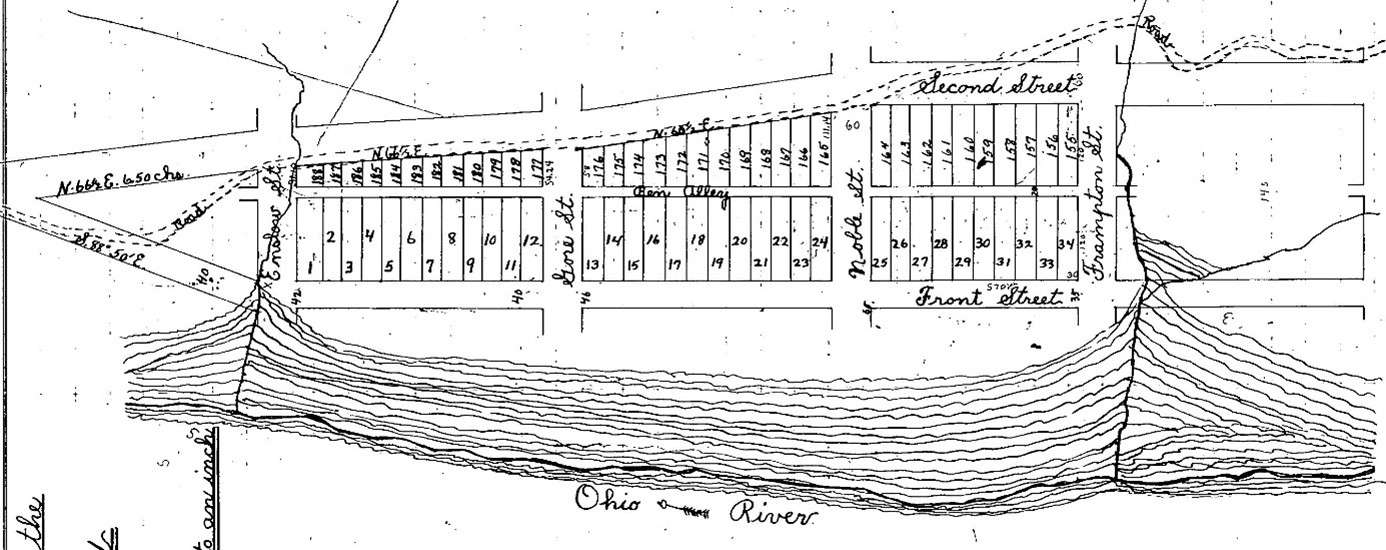

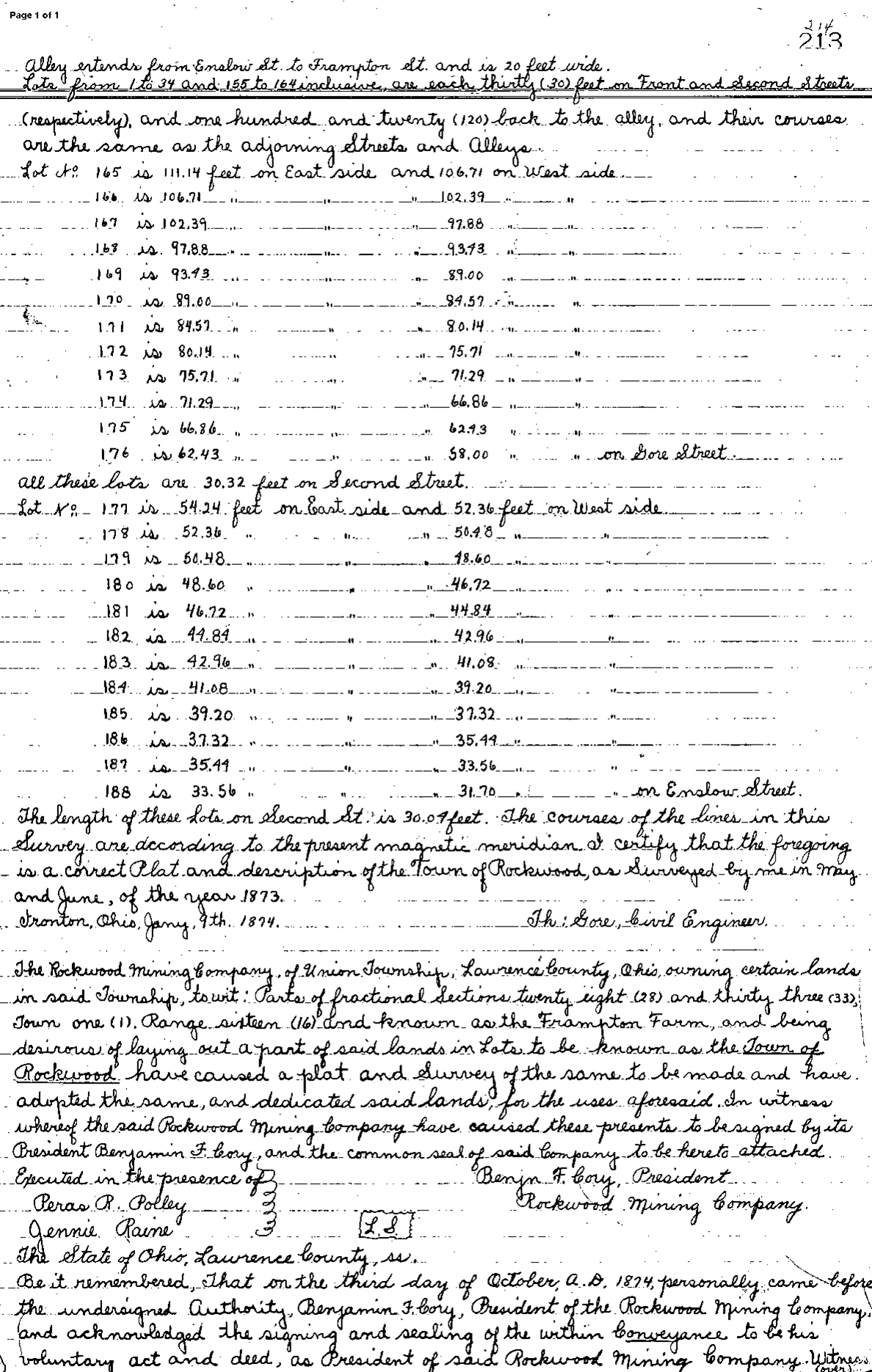

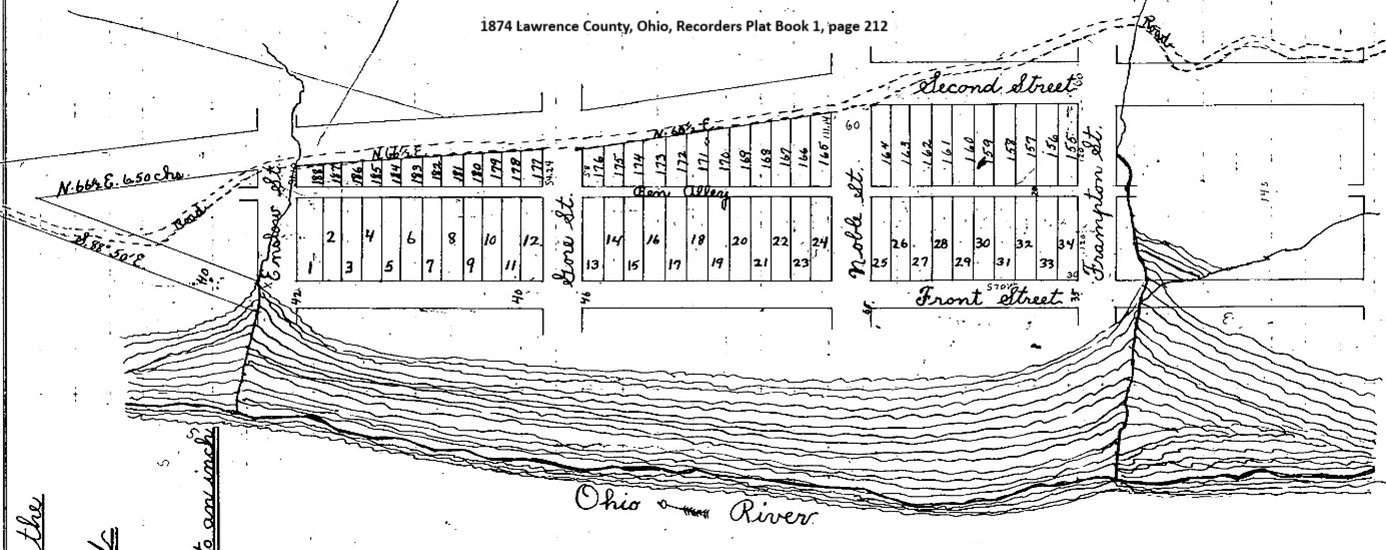
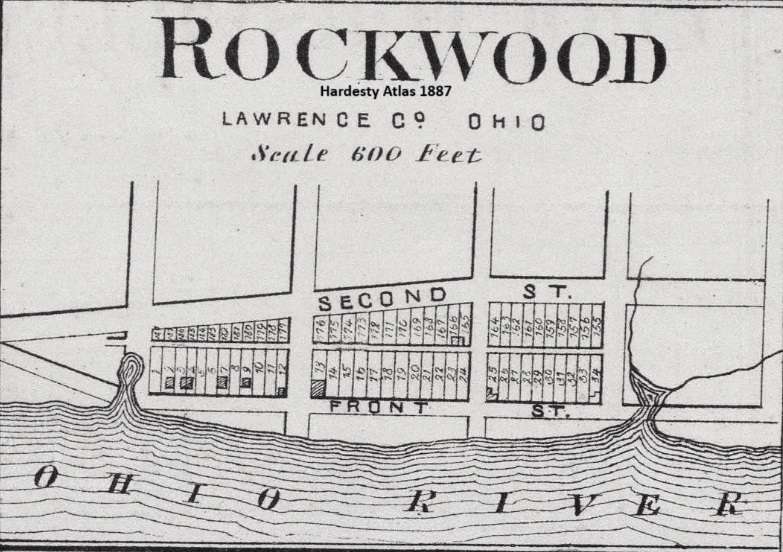
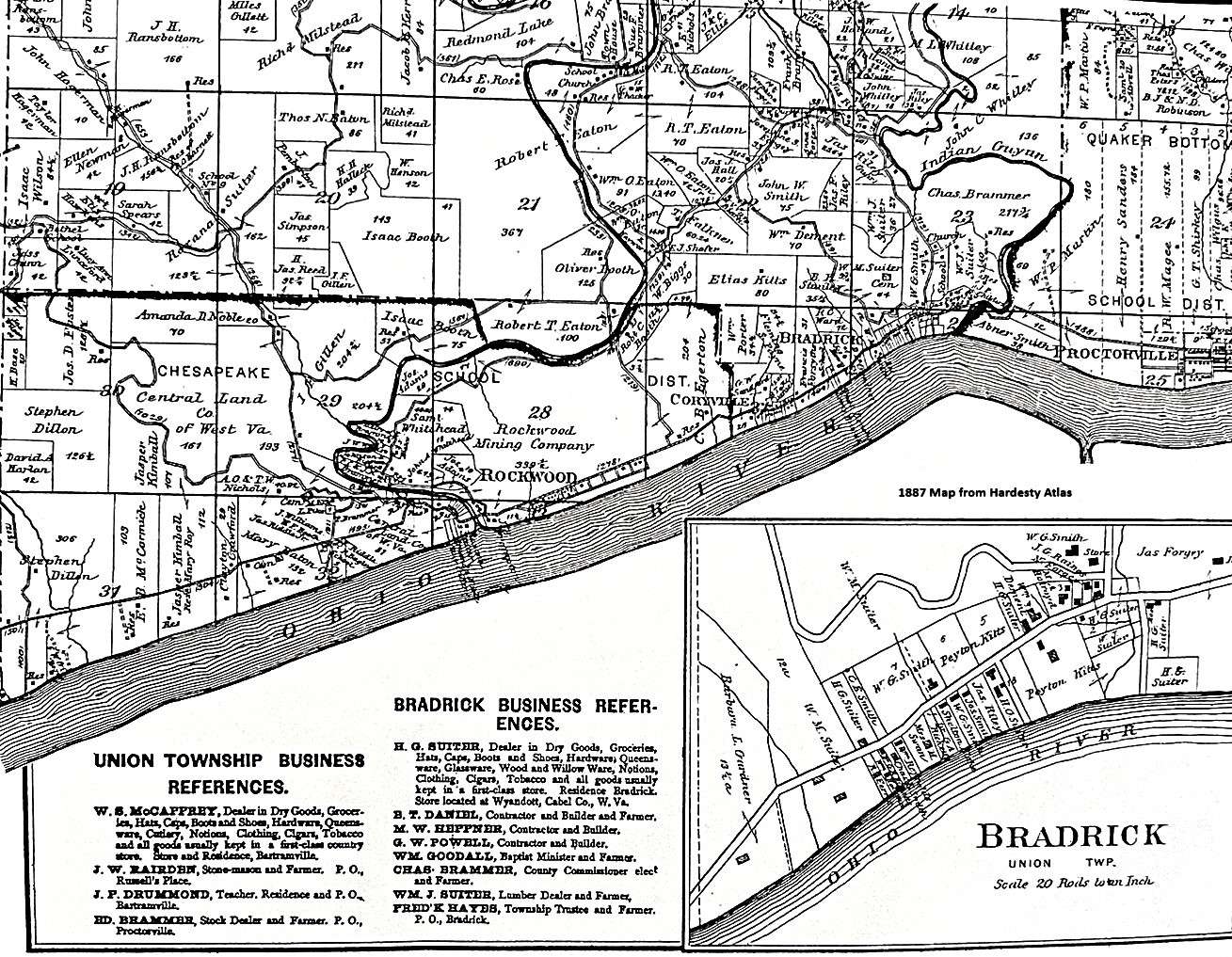
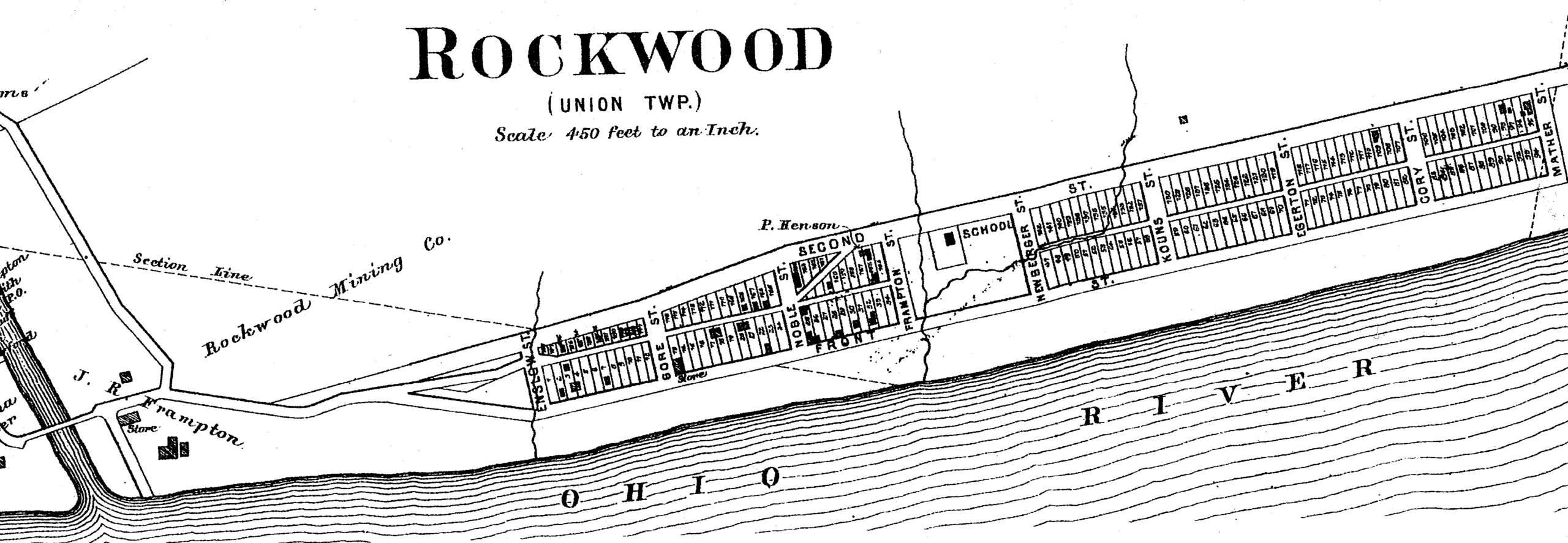
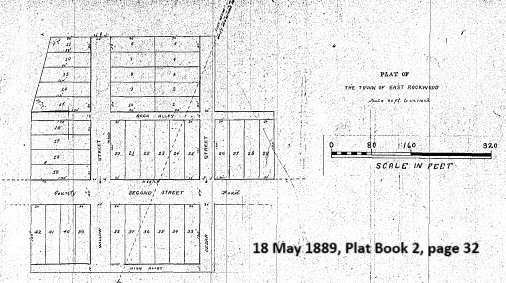
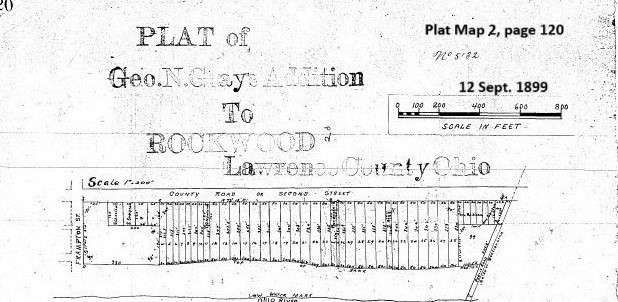
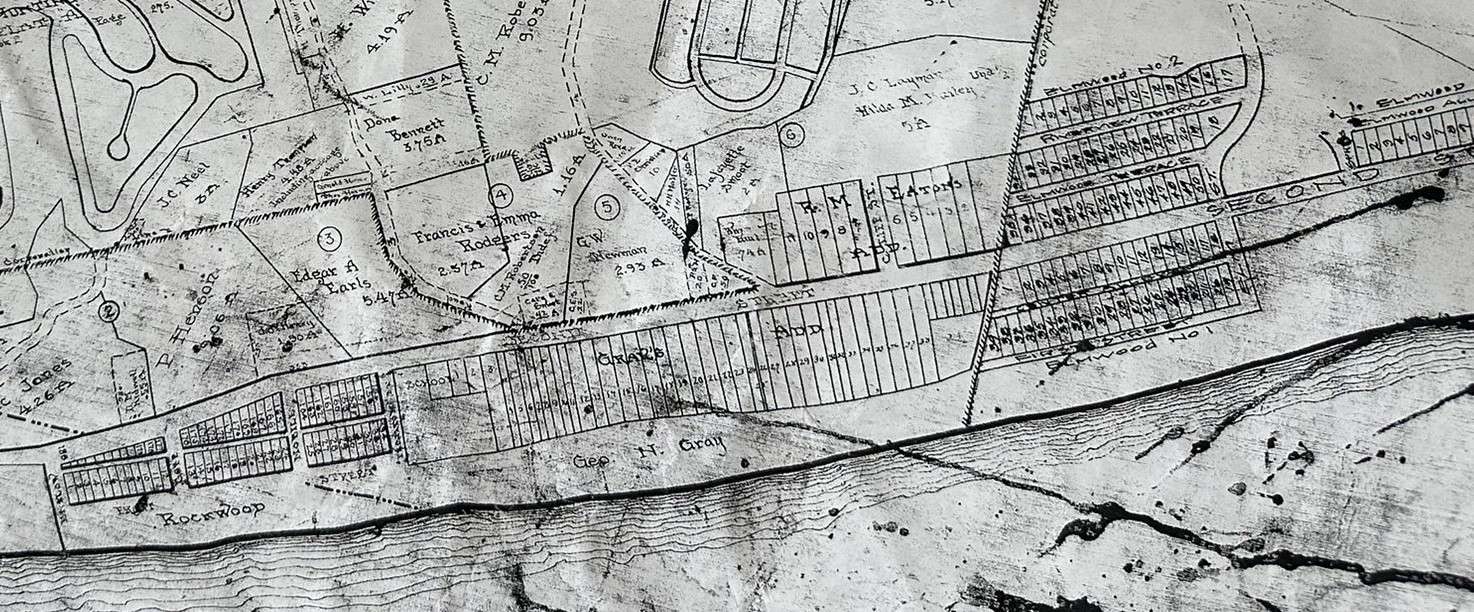
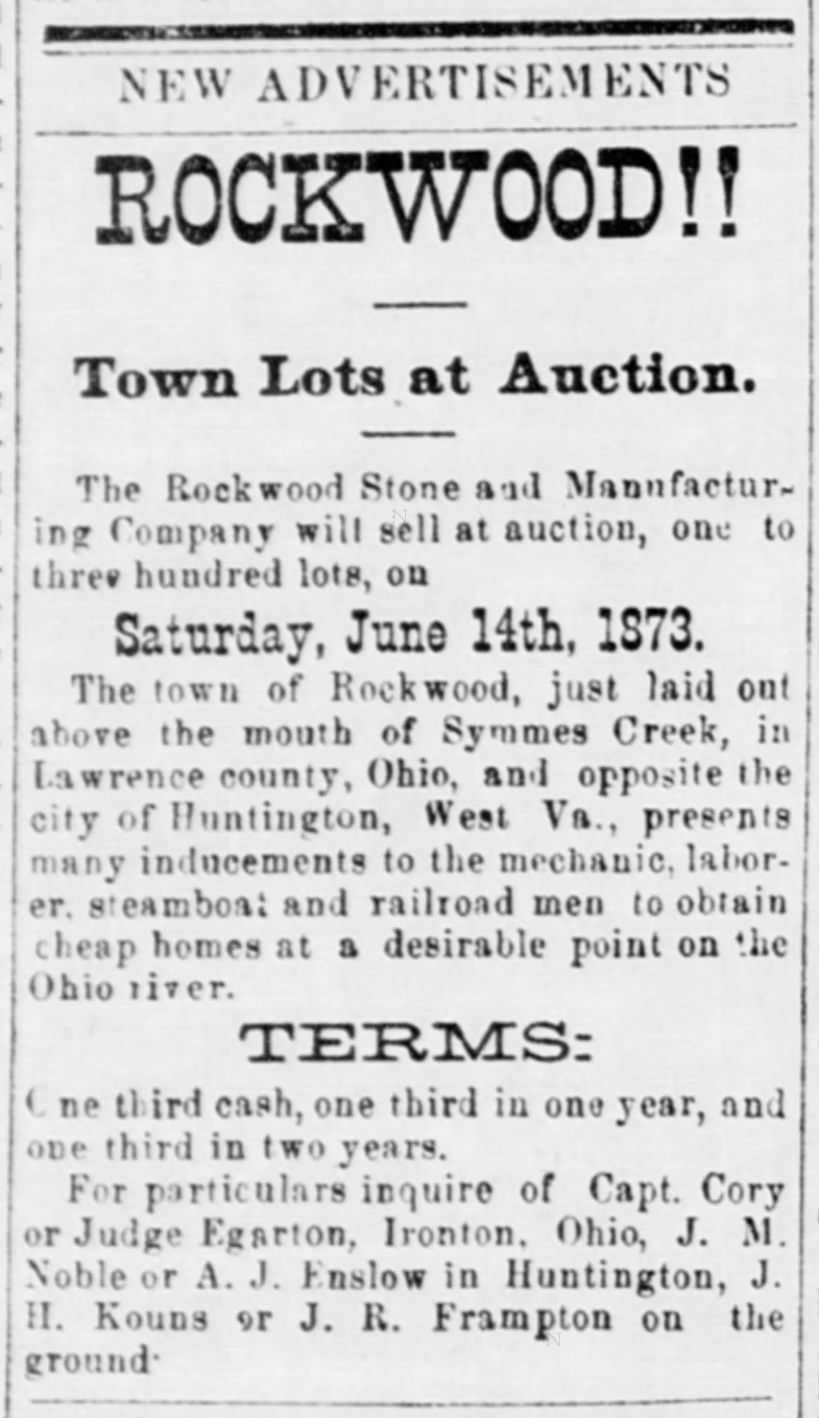

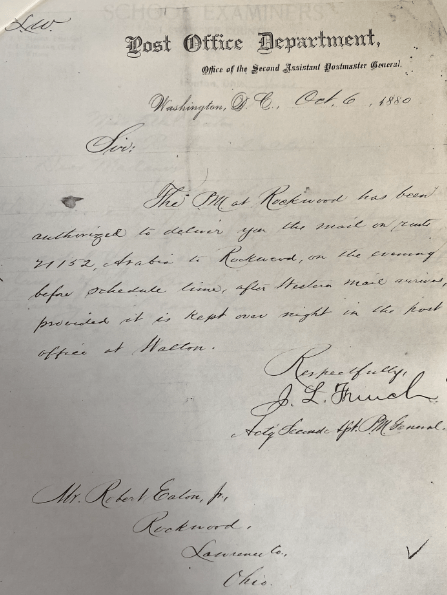
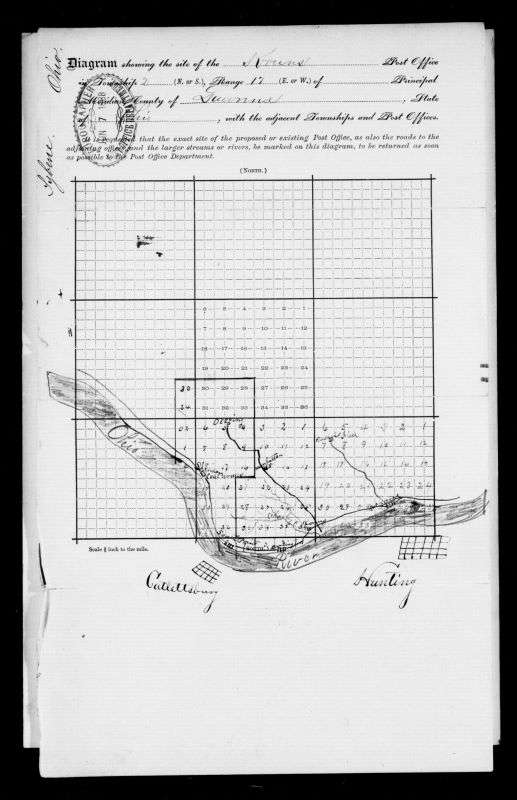
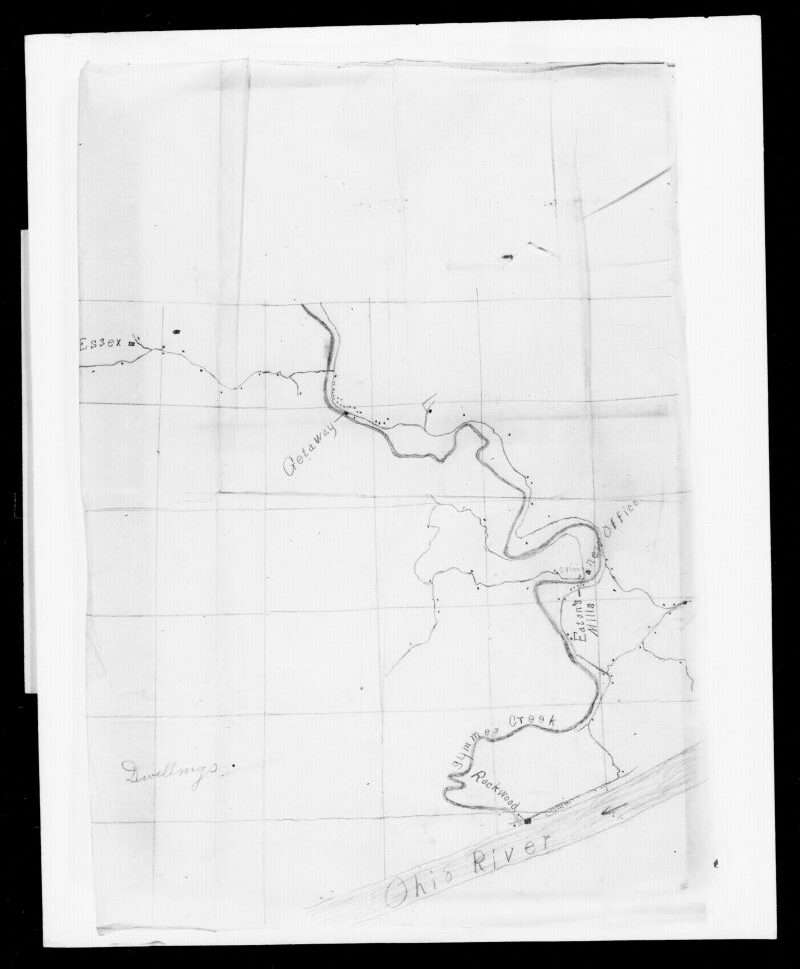
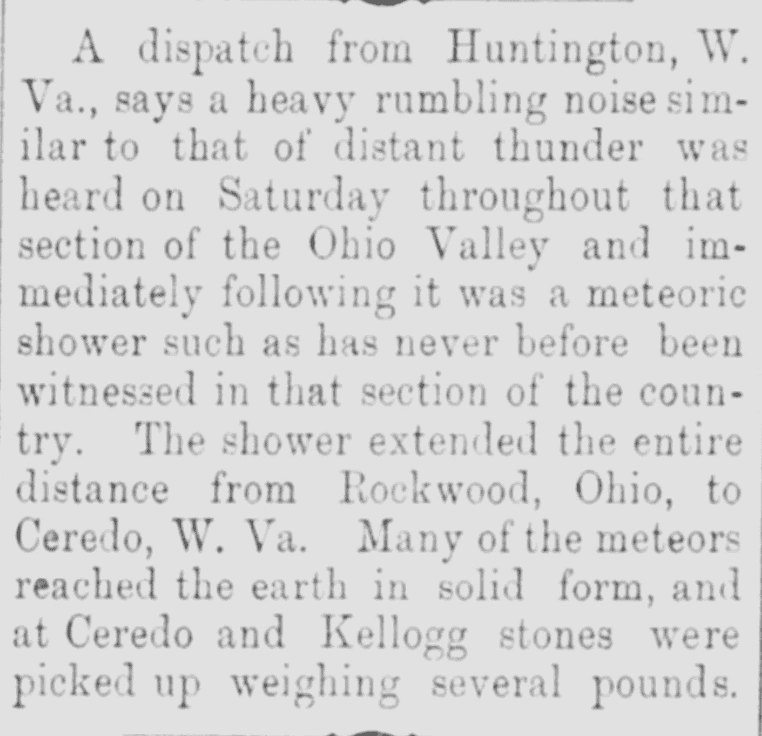
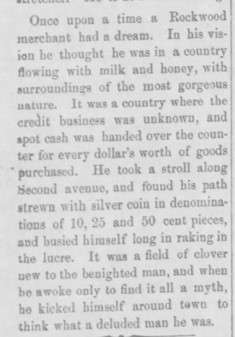
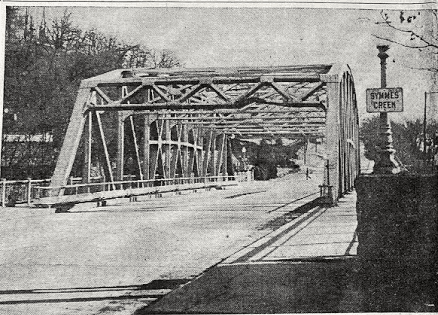

Thank you, Rusty, for commenting; I appreciate you sharing your memories with The Lawrence Register visitors. My children rode that same school bus route in the 1980’s and 1990’s, we lived down Browning Road in the subdivision. My kids would often walk to the Bradrick Mini Mart at the top of the hill. Good memories!
Martha
So many family names mentioned that still reside in the area. I drove the Chesapeake School Bus (#13) that serviced Rockwood Avenue to Suiter Lane and Symmes Creek Bridge to Chesapeake High School (area) from 2004 until 2018. Many of the children who rode the bus were presumably descendants of the early settlers of our area. Fascinating!